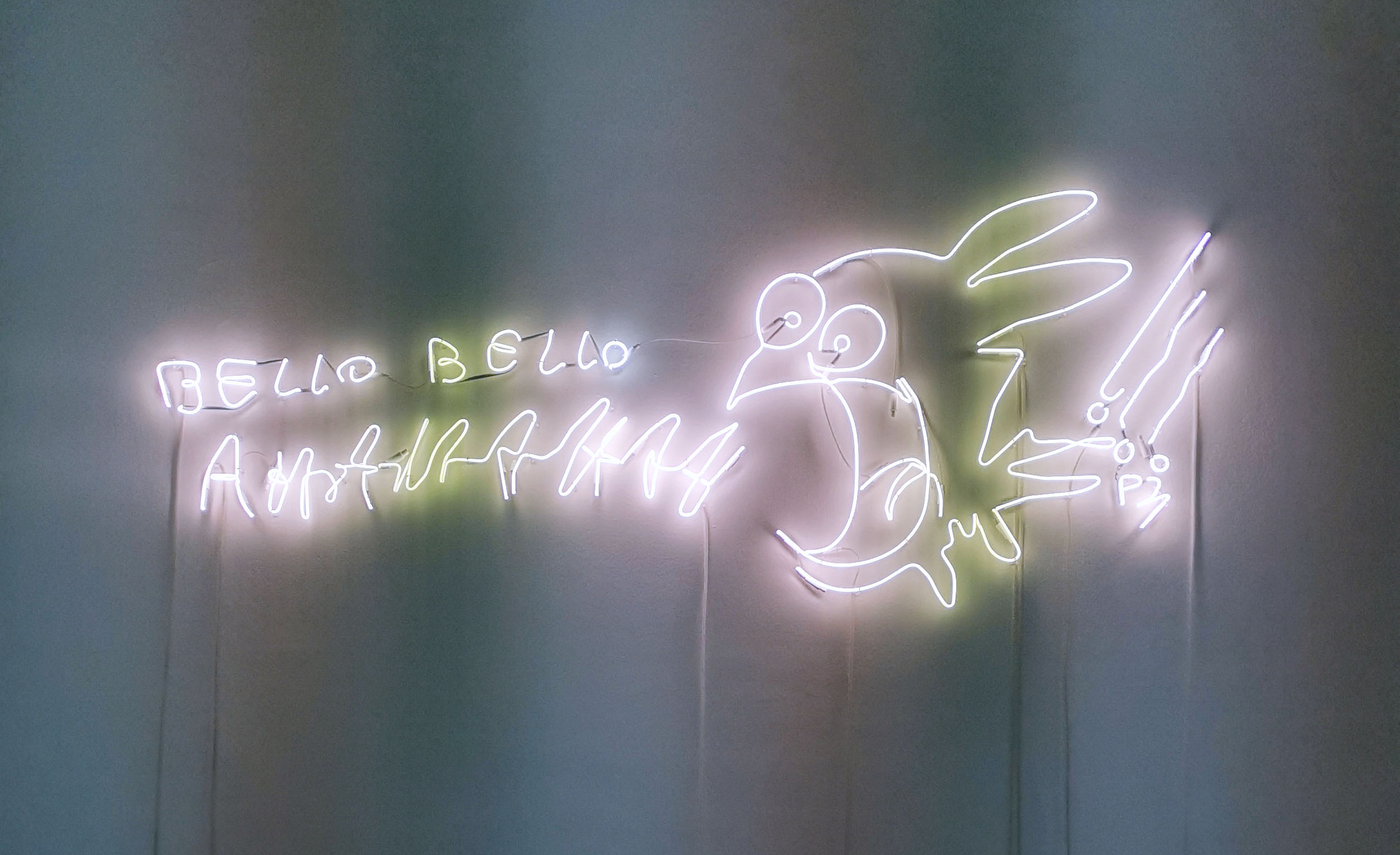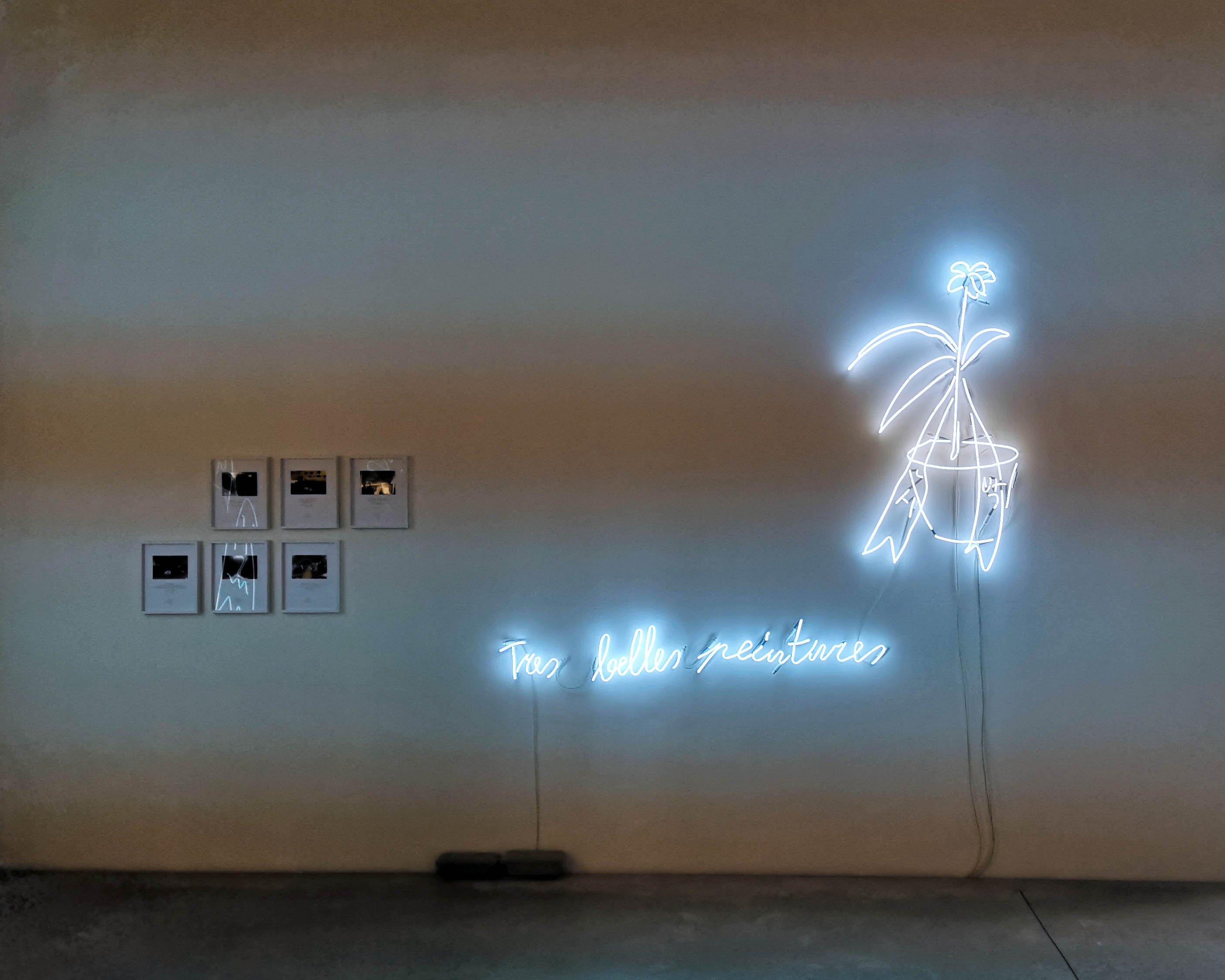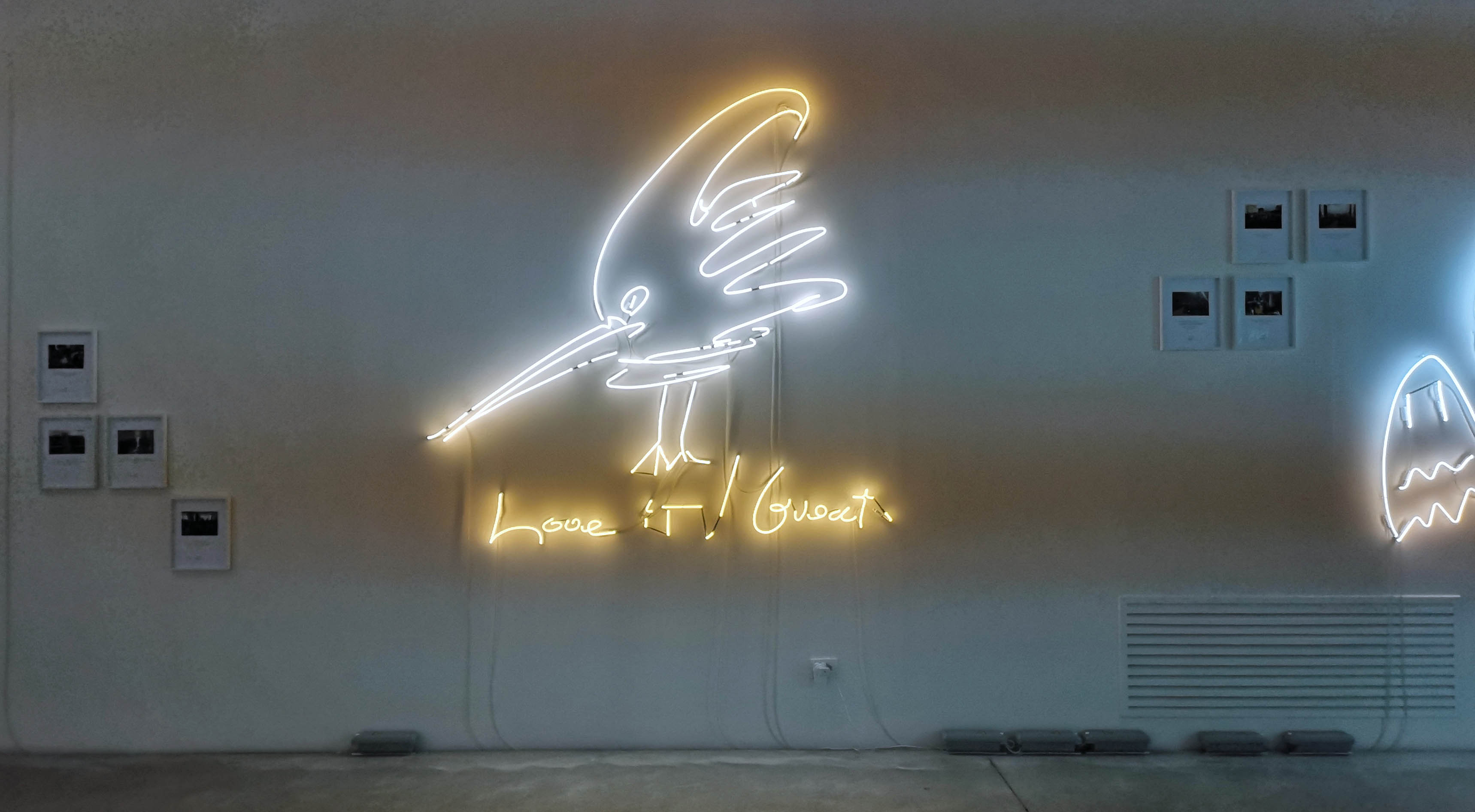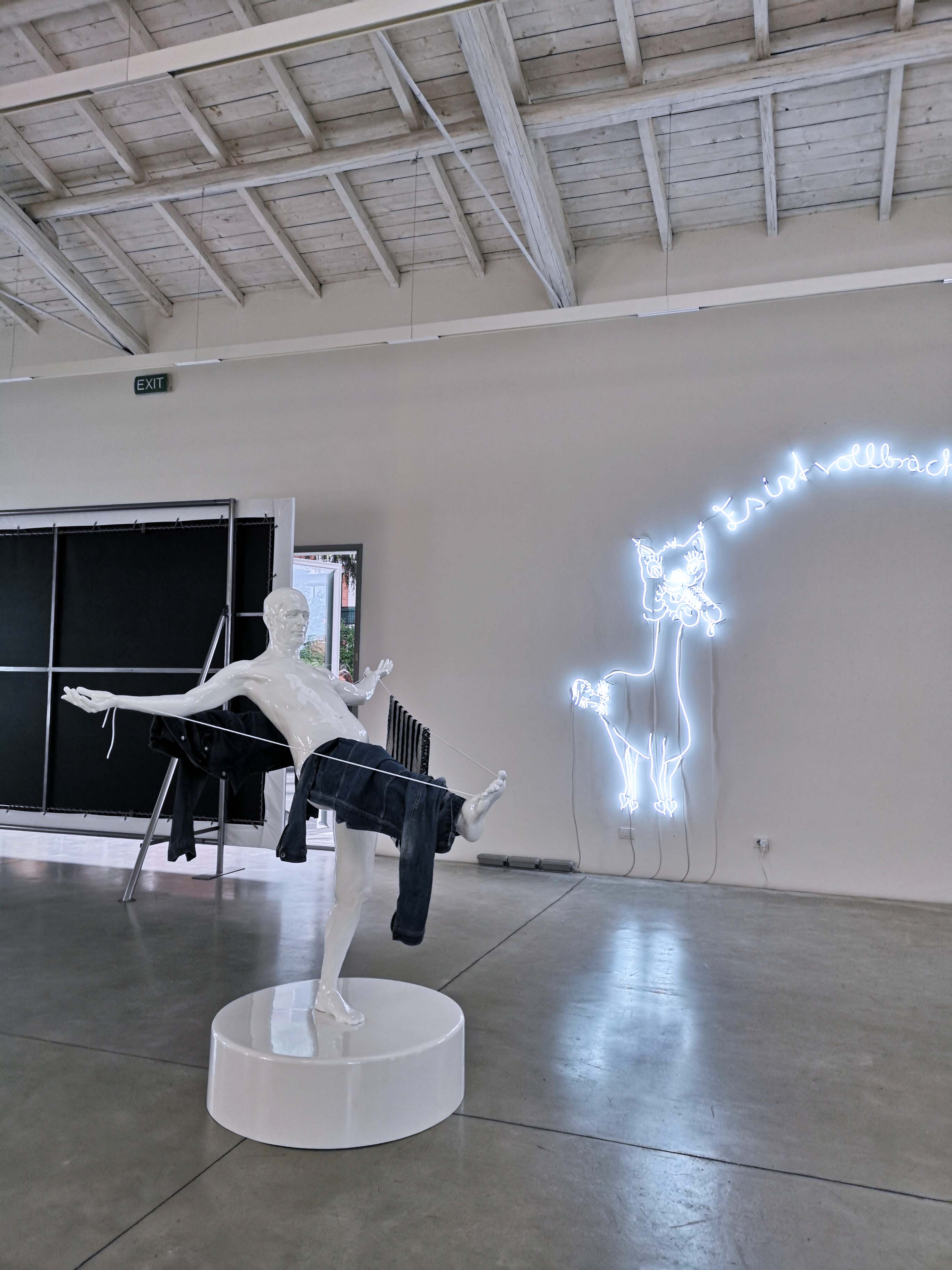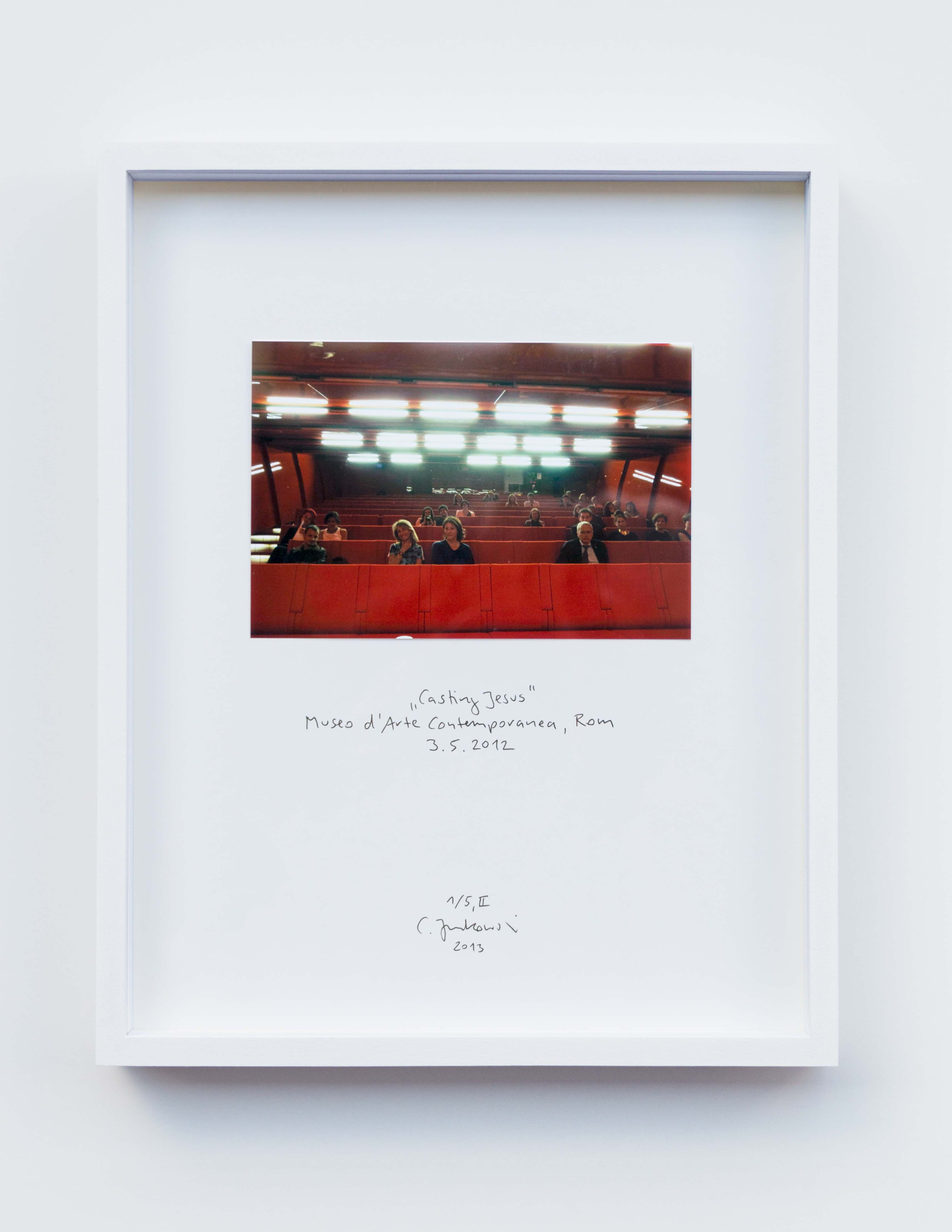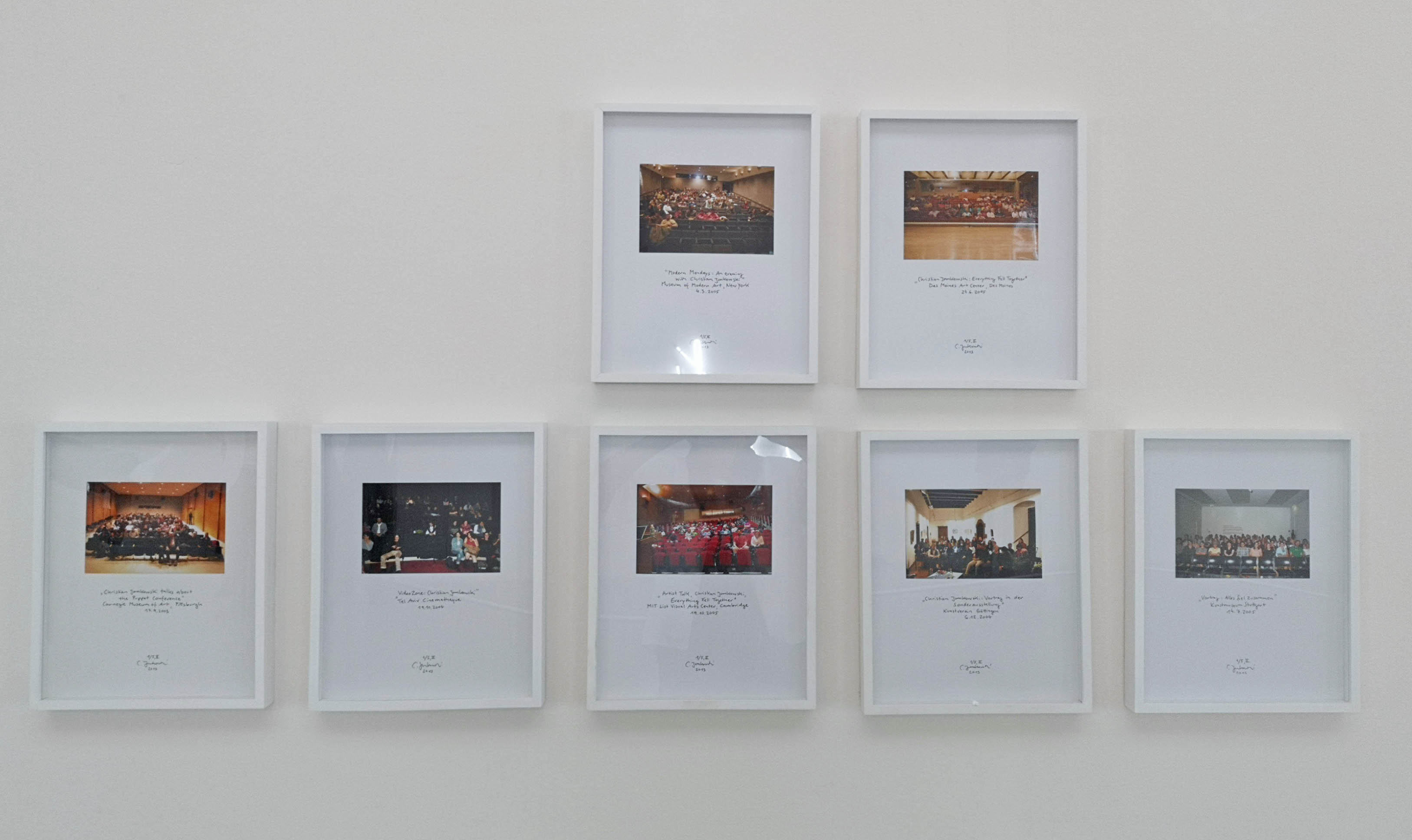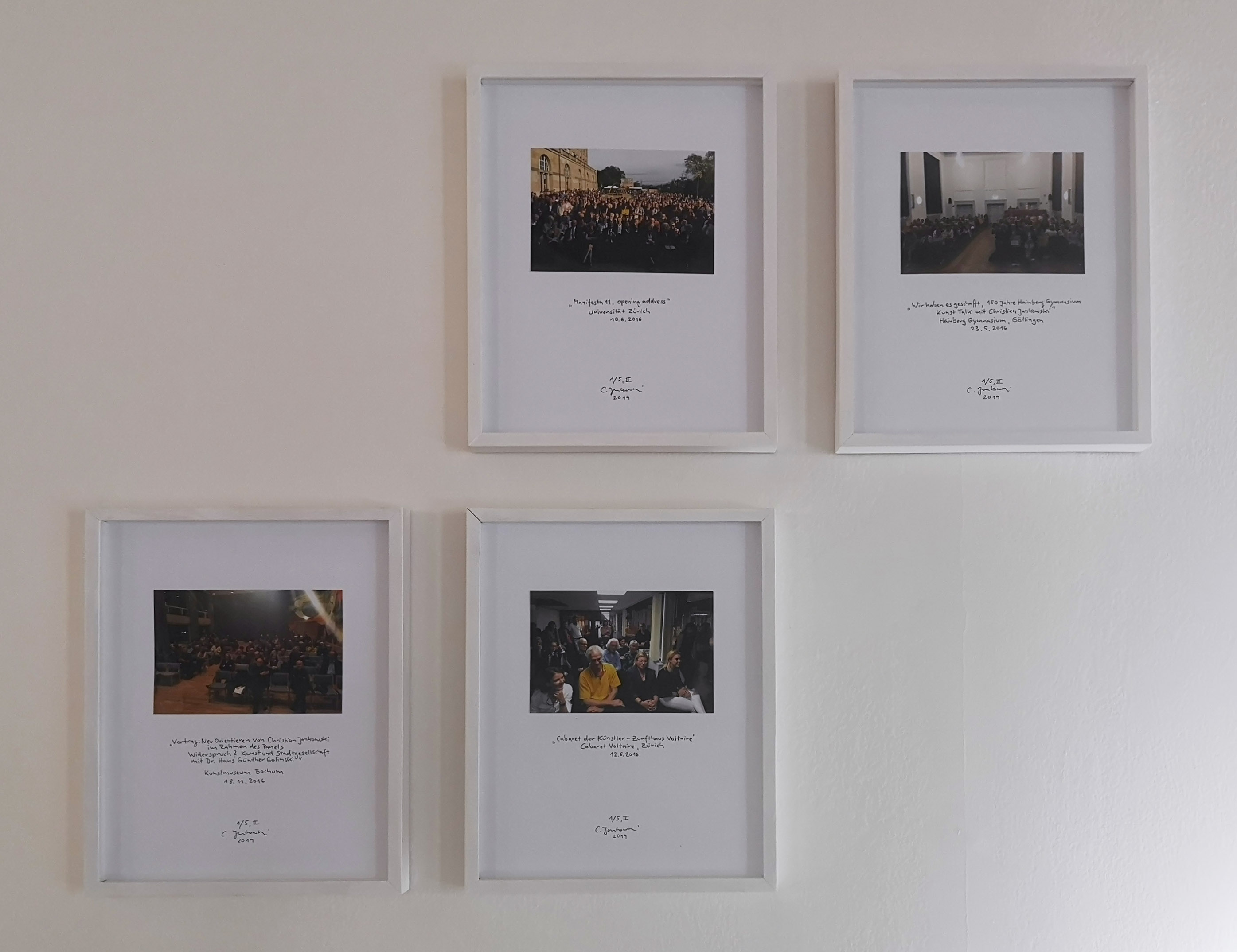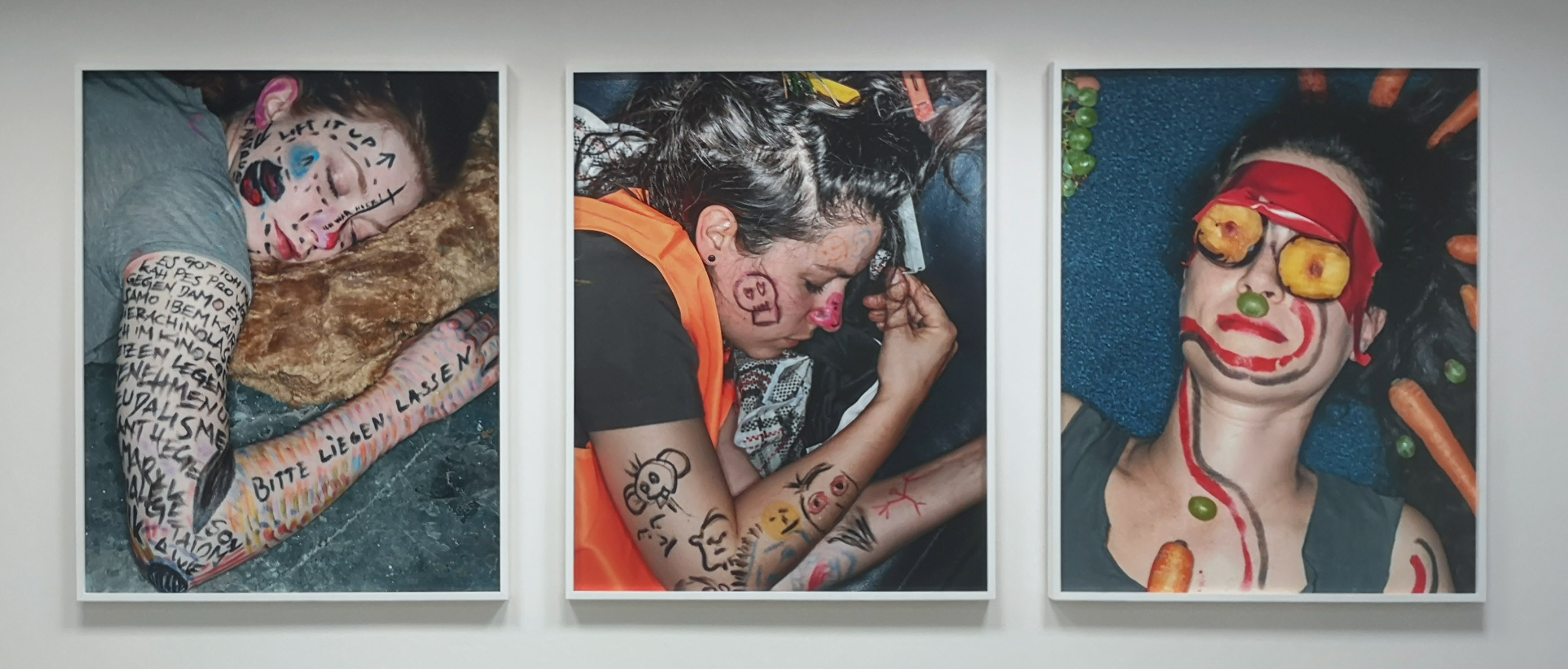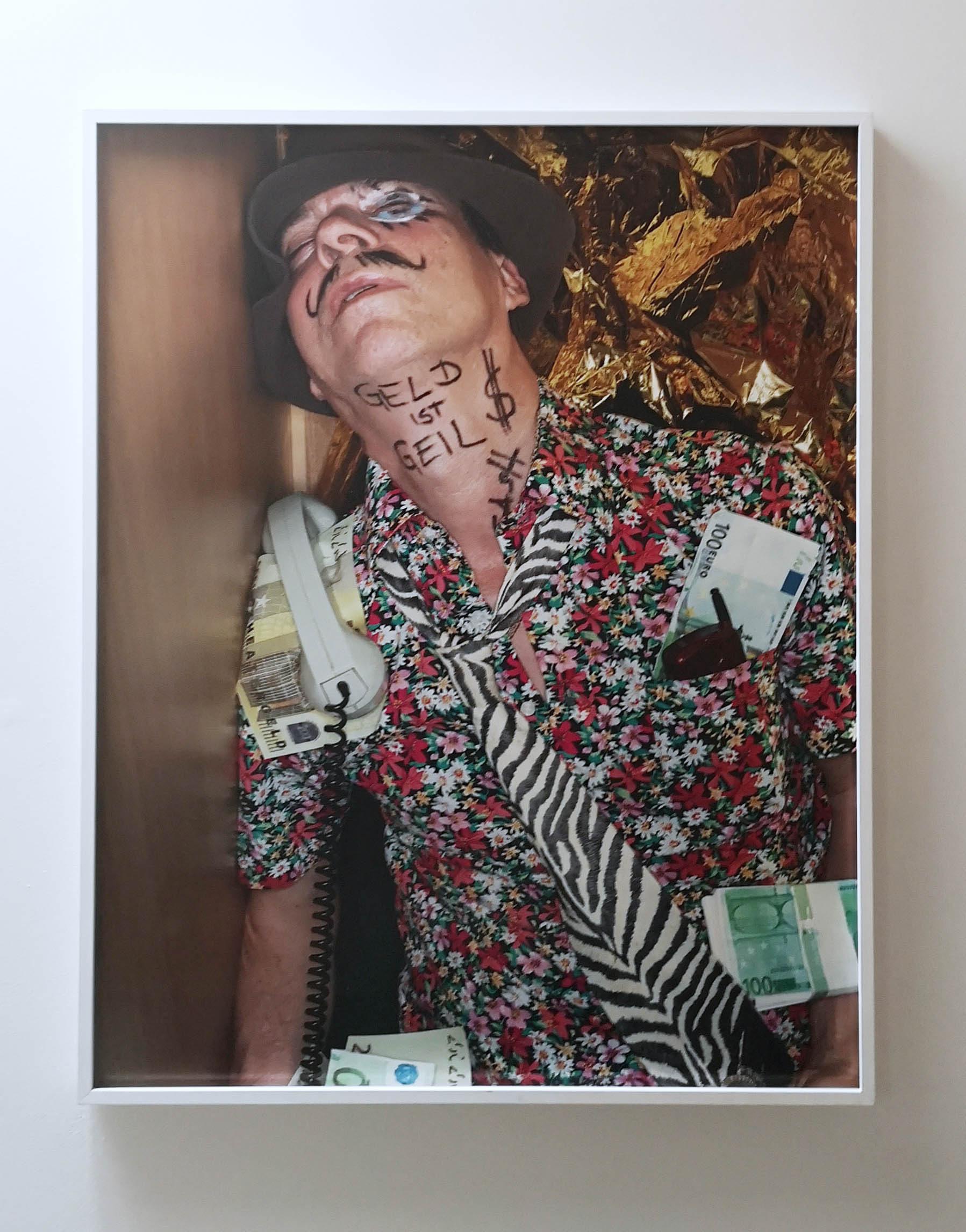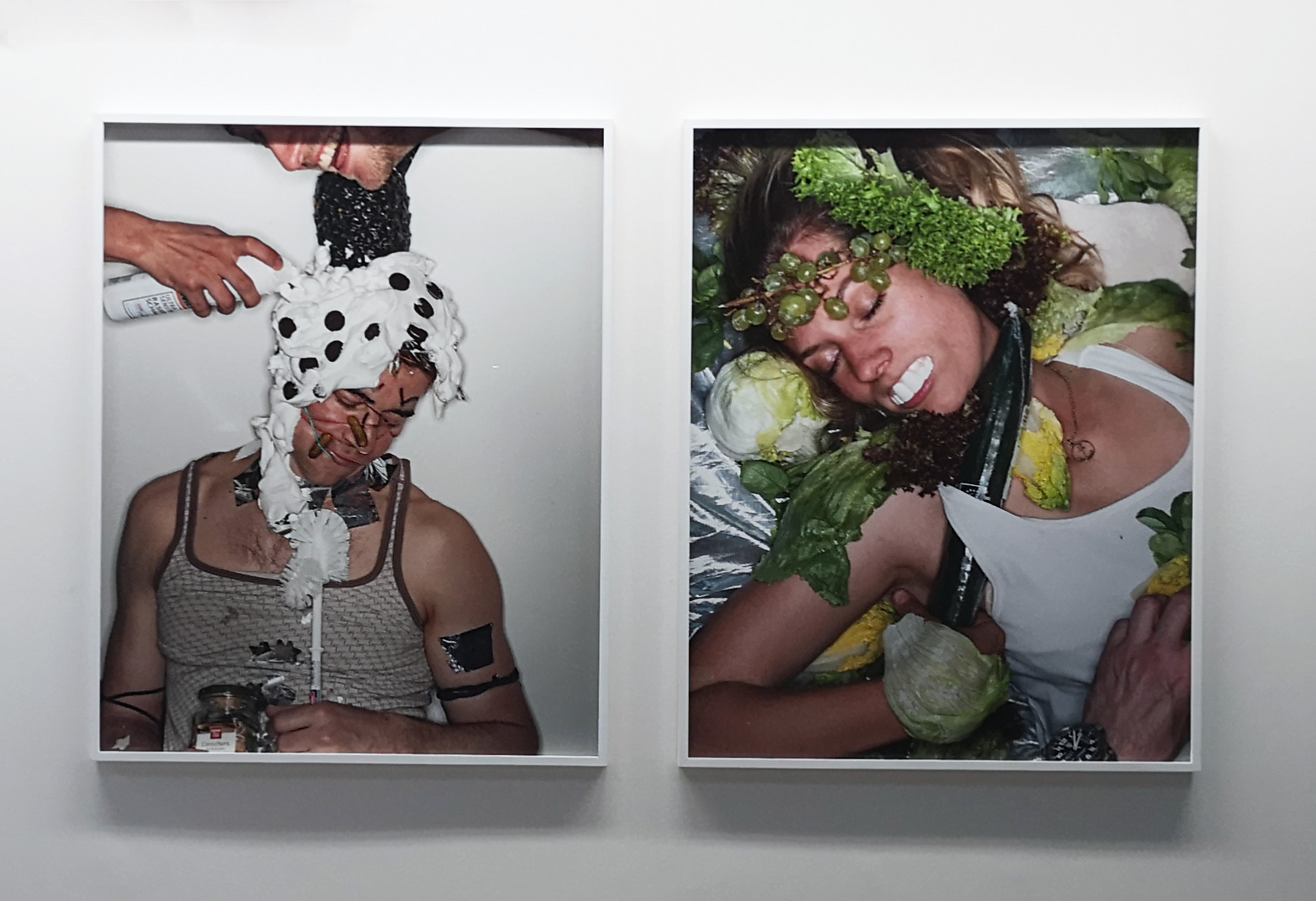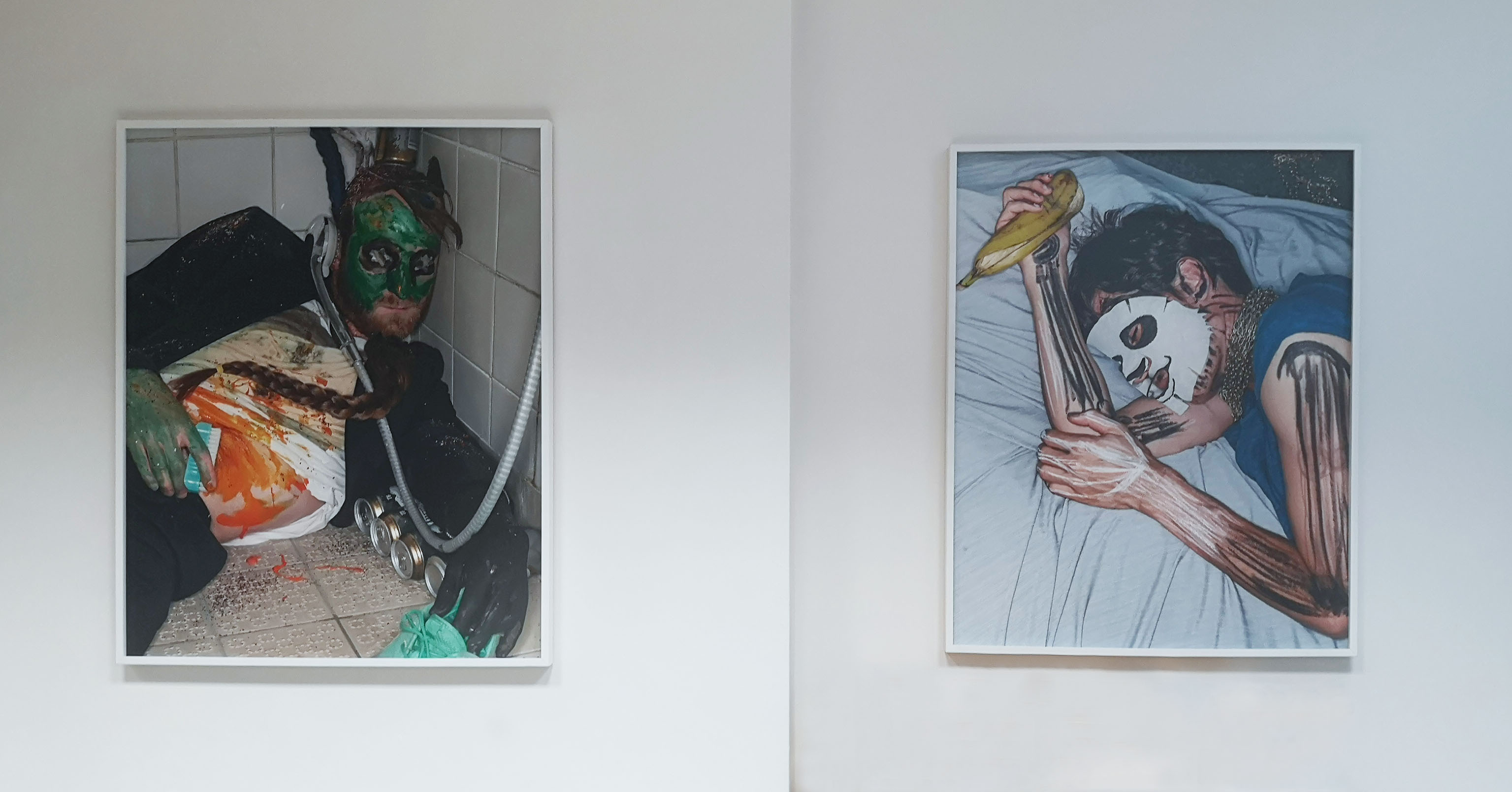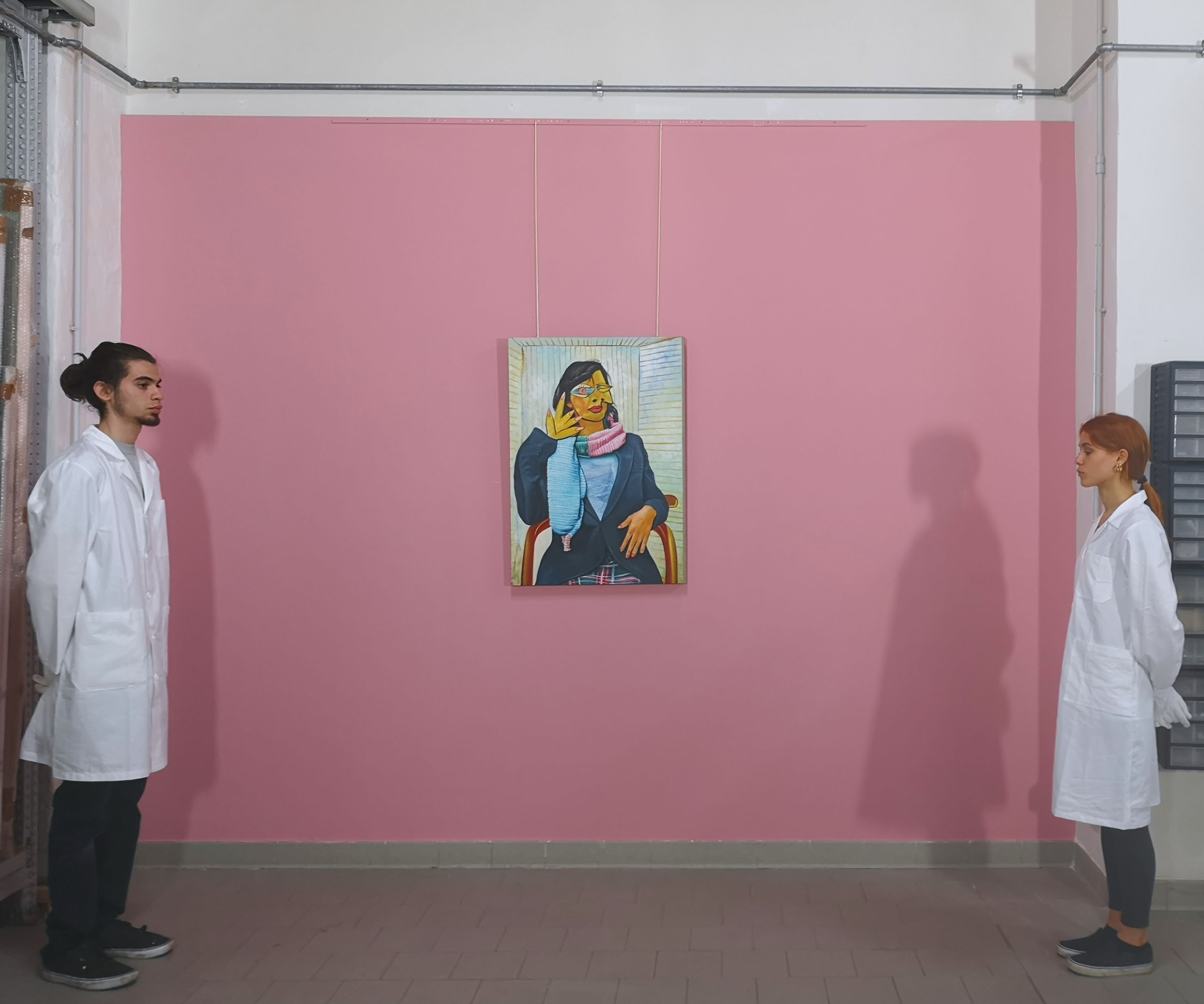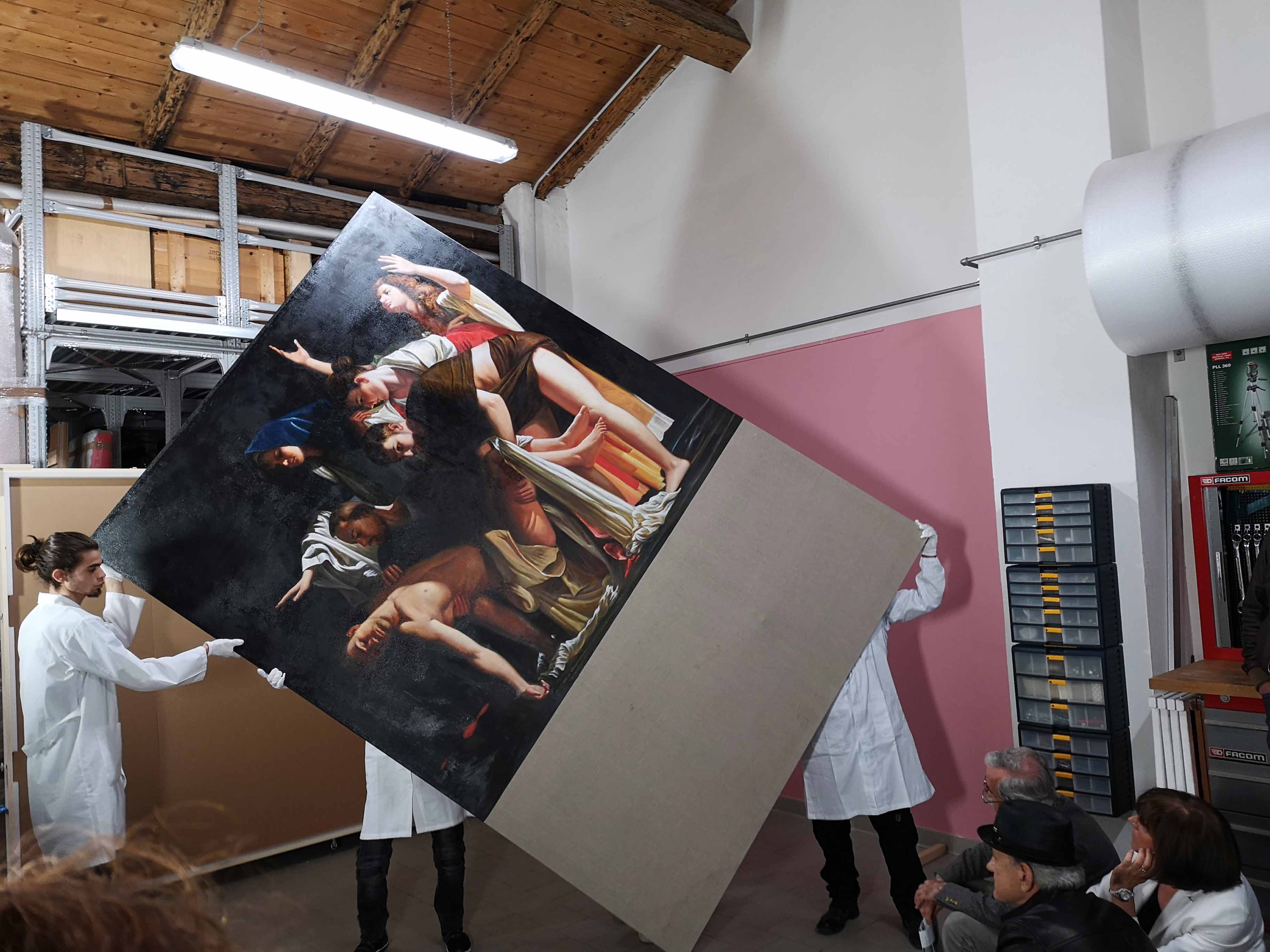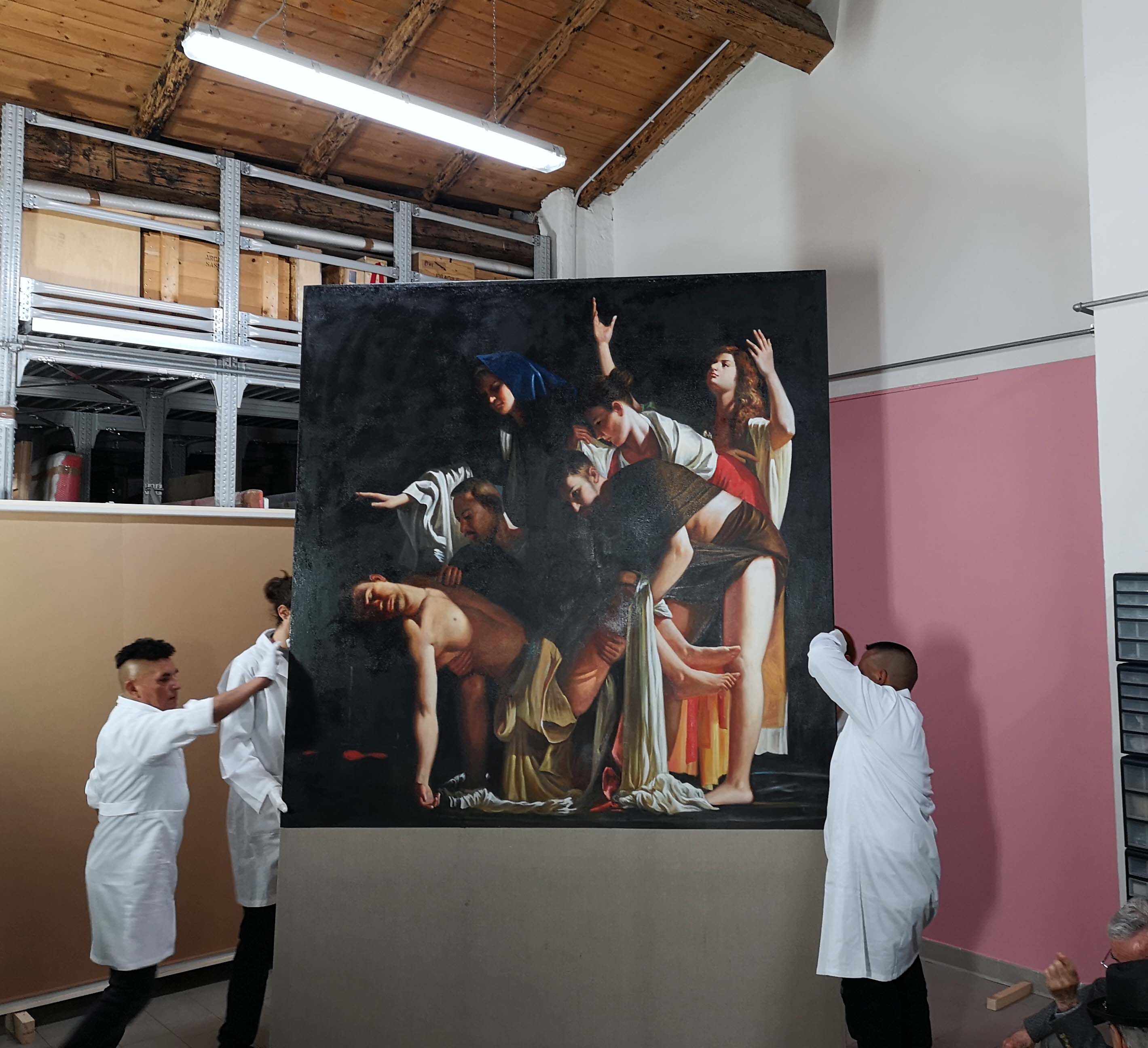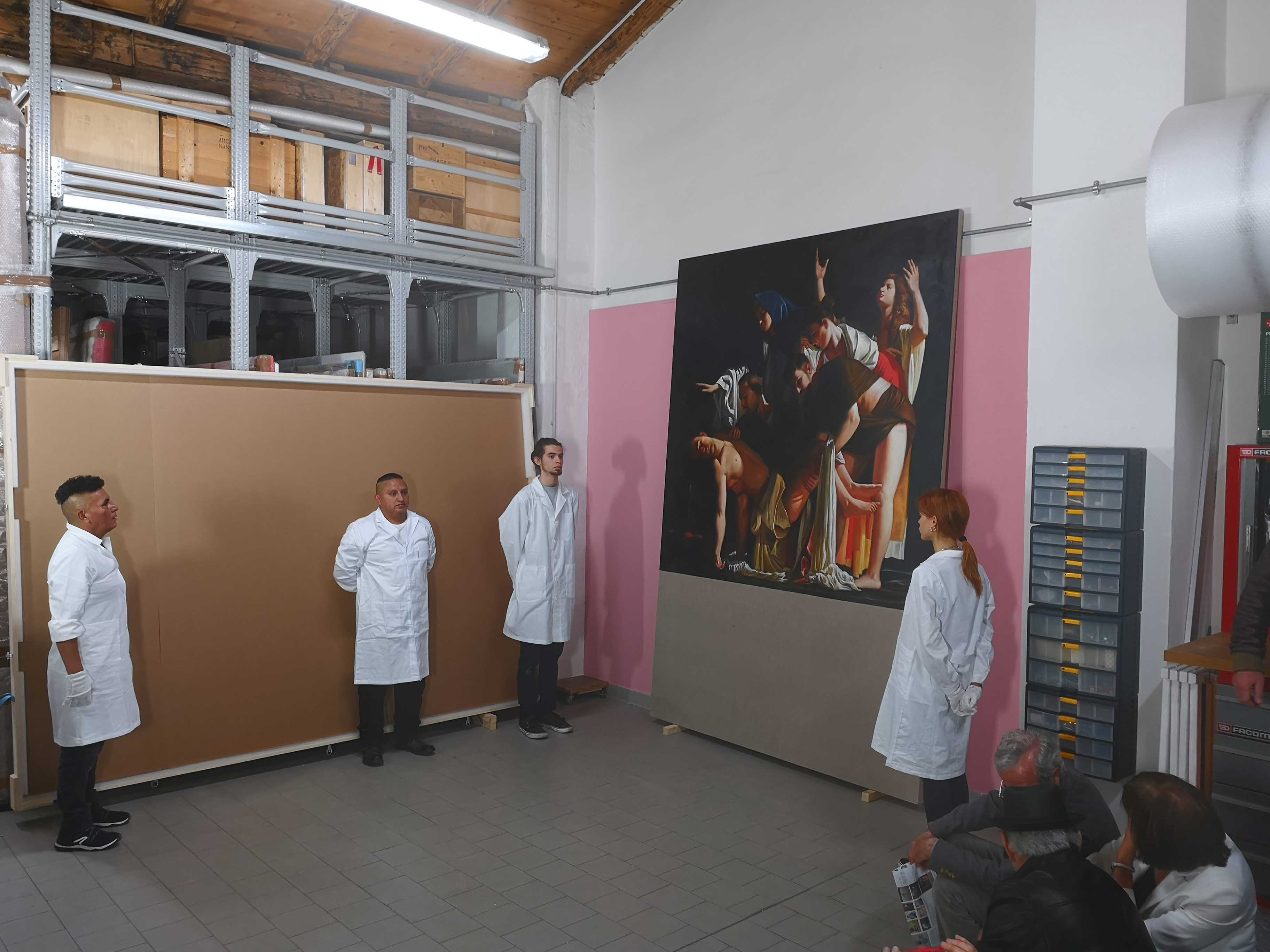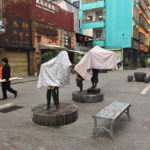 Galleria Enrico Astuni
Galleria Enrico Astuni
Via Iacopo Barozzi 3, Bologna
www.galleriaastuni.net
25 May – 28 September 2019
Summer break in August
In his solo exhibition, Where do we go from here? in the Bolognese Galleria Enrico Astuni, Christian Jankowski questions about the relation between artist and audience, both, in the traditional physical contact and the virtual way through social media. Moreover, the spectator could become active as performer during the show. The presented artworks ranging from photography, painting, video, installation to performance. Even though most pieces are relatively recent, including a work especially conceived for this exhibition, there is as well one oeuvre dating from 1992, which involved the bystander.
Hidden sculptures
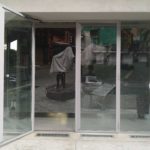 Arriving at the Astuni Gallery, the visitor is at first blocked in front of the entry. A photograph in large dimensions is installed behind the door and invites the observer to stop and discover the strange image. Sheets cover two bronze sculpture on the street of a Chinese city. Is it a documentation of an expected unveiling, an artistic intervention or a protest against these sculptures in public space? The photo Where do we go from here? (2019) was shot in Dafen, which is famous for its production of masterpiece copies. For lack of other possibilities, the reproducers dry their laundry in front of their workshops on the street, using the sculptures as clotheshorse.
Arriving at the Astuni Gallery, the visitor is at first blocked in front of the entry. A photograph in large dimensions is installed behind the door and invites the observer to stop and discover the strange image. Sheets cover two bronze sculpture on the street of a Chinese city. Is it a documentation of an expected unveiling, an artistic intervention or a protest against these sculptures in public space? The photo Where do we go from here? (2019) was shot in Dafen, which is famous for its production of masterpiece copies. For lack of other possibilities, the reproducers dry their laundry in front of their workshops on the street, using the sculptures as clotheshorse.
Washing in the gallery – the visitor is part of the artwork
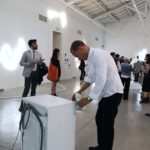 Using the small corridor, the visitor can now enter the gallery. In the middle of the exhibition hall there is a washing machine and besides a life-size sculpture of Christian Jankowski. The room is filled with the scent of washing powder and the visitor is asked to bring his own laundry to clean it in the gallery. Subsequently, the sculpture serves as clotheshorse. Here the action seen in Dafen is repeated, but not out of necessity. Everyday Tasks – Sphere of Gods (2019) is an interactive artwork, which includes a daily job and the invitation to dwell in the exhibition space during the washing process in the exhibition space.
Using the small corridor, the visitor can now enter the gallery. In the middle of the exhibition hall there is a washing machine and besides a life-size sculpture of Christian Jankowski. The room is filled with the scent of washing powder and the visitor is asked to bring his own laundry to clean it in the gallery. Subsequently, the sculpture serves as clotheshorse. Here the action seen in Dafen is repeated, but not out of necessity. Everyday Tasks – Sphere of Gods (2019) is an interactive artwork, which includes a daily job and the invitation to dwell in the exhibition space during the washing process in the exhibition space.
The surrounding artworks witness the artist’s attention to the public’s reactions. Visitors (2010-19), presents annotations in exhibition visitor books. During the last nine years, the artist transformed texts and drawings into wall-mounted neons. After the show, is before the show! The oldest comments are dating from the group exhibition Who is your audience (2010) held in the Astuni Gallery, with the participation of Christian Jankowski. Other annotations were collected in the artist’s shows in museums and galleries worldwide.
In his ongoing series My Audience (2003-19), the artist is going even a step further: the audience is not only implicated in the creation of an artwork, it is the object itself. Every time Christian Jankowski is invited to talks or panel discussions, he takes a photo of the public. This permits the artist to invert the situation, where the spectators observe him on a silver plate. He becomes active himself – as observer of his spectators.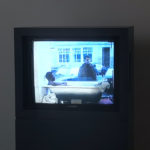 Already in 1992, Christian Jankowski included the bystanders into his artwork Public Bath. A video documents this performance, where passers-by could take a bath in a shop window. Later, the bathers were involved in the exhibition, when confirming their participation to the visitors. However, not only the active participants were filmed, also the onlookers are on view. Additionally to the reversal of the audience role, it is a game questioning public and private sphere.
Already in 1992, Christian Jankowski included the bystanders into his artwork Public Bath. A video documents this performance, where passers-by could take a bath in a shop window. Later, the bathers were involved in the exhibition, when confirming their participation to the visitors. However, not only the active participants were filmed, also the onlookers are on view. Additionally to the reversal of the audience role, it is a game questioning public and private sphere.
Sleeping actors, another inversion
In the side rooms of the gallery, Enrico Astuni presents the photo series We are innocent when we sleep (2018-19). Actors of the Berlin theatre, the Schaubühne, are displayed seemingly sleeping. Apart from the passive posture, relatively untypical to the usually actives on the stage, they are striking painted and outfitted with prominent accessories. Thus, the actors become surface of a projection like a canvas, without own effort. Instead of the involvement of the normally passive observer, here the active players become passive. This is once again an inversion of roles.
From painting to photo to paintingWith Neue Malerei (New Painting, 2017), Christian Jankowski expands his reflexion to the new medias. He focusses on the social media movement of tableaux vivants. Here people take the posture of famous paintings and post photographs of it. The artist collected several of these images and went with them to Dafen, to let them transfer back into their original medium: painting. At this point, the circle of transformation by various actors closes. Moreover, we are back to the geographical point of departure of the exhibition.
Nevertheless, the artist did not stop the process here. Instead of a simple arrangement of the oeuvres in a traditional hanging, he created a performance. In front of the audience, assistants of the gallery unpacked a painting and fixed it on the wall. After a short term of presentation, the performers took the picture down, to package it again and continue with the next. On one hand, the performance reminded a sales event. Thereby, the character of art as market good is underlined, which refers also to the quasi-industrial art production in Dafen. On the other hand, the performance evoked the impression of an analogue Instagram event. By this means, Christian Jankowski hints to the origin of the paintings. At the same time, he makes an allusion to the flood of images in the social media, where the distinction between transmitter and recipient is completely dissolved. The performance was executed at the opening and is ongoing in the exhibition until the end of September, but the frequency of changing the paintings is only daily.
Photos © Astrid Gallinat, if not mentioned otherwise

